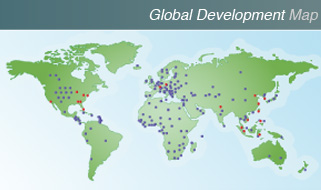-
“The first thing we do, let’s kill all the lawyers.”
William Shakespeare (Henry VI, Part II)
Posted October 26, 2012
It seems that a story appears in the news almost every day about the dangers of youth sports and traumatic brain injuries and concussions. It was recently reported that 5 young boys, all under the age of 12, received concussions in a single Pop Warner tackle football game in Massachusetts. In a recent editorial in the New York Times, a renowned neurosurgeon and researcher laid out the scope and risks of concussions and brain injuries that derive from children playing sports. In yet another story a local high school has been told to shut down their football program. “If we don’t shut it down, the lawyers will shut it down for us,” they were told. This story then goes on to criticize the idea of cutting back on contact in practice to make the sport safer. It likens that to the tobacco companies once saying that putting filters on their cigarettes made them safer.
The high profile suicides of several NFL players this past year, along with the well chronicled problems of so many veterans returning from the wars in the Middle East have brought traumatic brain damage to the public’s attention on a large scale. Even more publicly prominent now is the litigation between thousands of former NFL players and the league. The infamous “What did they know and when did they know it?” question has reared its ugly head; and analogies to the tobacco industry litigation are not uncommon.
The numbers are large, for instance fourteen million children under the age of 14 play tackle football in America each year. This includes at least sixteen thousand 5 to 7 year old's playing Pop Warner tackle football. In his editorial Dr. Cantu also examined youth soccer as well as girls field hockey and lacrosse where serious helmets are not used for historical and cultural reasons.
His editorial points out that at age 4 or 5 a child’s cranium is roughly 90% the size it will be as an adult. Yet the child’s weak neck cannot brace for contact like an adult’s can. Our brains are also still developing throughout childhood and the increasing evidence is that damage from repeated traumatic assault, whether a “concussion” or not, can be permanent.
Clearly we are not going to do away with youth sports. There are few things as much fun and instructional as being part of a team, something bigger than oneself. It is also through sports that most of us learn about playing by the rules, never giving up, and learning to lose gracefully. These are all traits that sport can instill and imprint in us and which serve us well throughout life. I believe this is true even for those who give up competitive sports early on for other pursuits. Sports are completely integrated into the social fabric of our communities and families. This is our conundrum. We know something must change, but how will we accomplish that change and what will be the driving force?
Dr. Cantu makes some sensible, easily implementable suggestions, which I suspect will never go anywhere. He recommends for instance that no one under the age of 14 should be playing tackle football or be “heading” a soccer ball. Save all of that for high school. How straightforward, inexpensive and easily implementable is that? It couldn’t be any easier. From a medical/science point of view, there is no “controversy” here. It would have a dramatically positive effect. But we know these common sense solutions will never be adopted.
First, as parents we love too much the “mimicking” of our real sports in our children’s world. As pointed out by Dr. Cantu the more the uniforms and games look like the “real” thing, the more popular they are. Even more importantly as competitors, how can someone who does not grow up ingraining the fundamentals and mechanics of the “whole” sport, ever compete with someone who has? He/she cannot. And if there is one thing our society seems to be obsessed with, it is creating competitive advantages for our children, not restraints.
At Neuralstem, we are working on both cellular and small molecule therapies to treat brain injuries and the functional and cognitive losses that result from them. From this vantage point, we see the devastation caused by these tragic events in broad populations. We are working on being able to repair the damage. But certainly as a society we should be working to prevent the damage in the first place. The truth though, is that we aren’t big on prevention in America.
One would hope that the urgency of the problem would create a different attitude, at least with respect to our children, or with respect to our returning veterans so afflicted with related problems. But that is not how our society seems to work. Indeed the very institutions that have the resources and the clear motive to quickly and seriously impact these problems in the “preventive stage” are already frozen into defensive postures dictated by litigation, or feared litigation.
One’s first reaction to this is to quote Henry VI and curse the attorneys. But in the end, the tobacco litigation is probably an apt analogy here. And in the end, it is litigation and threatened litigation alone that will ultimately usher in some common sense improvements.
We cannot completely remove risk from childhood; nor can we or should we abandon our culture of sports. But common sense can and should prevail. It doesn’t take hundreds of millions of dollars of research to know what to do here. Dr. Cantu has laid out a very sensible and implementable course of action. We should damn the lawyers (not kill) and begin the process of making contact sports less dangerous.






